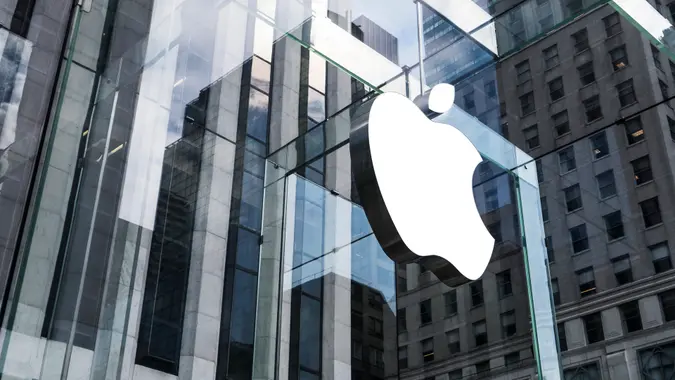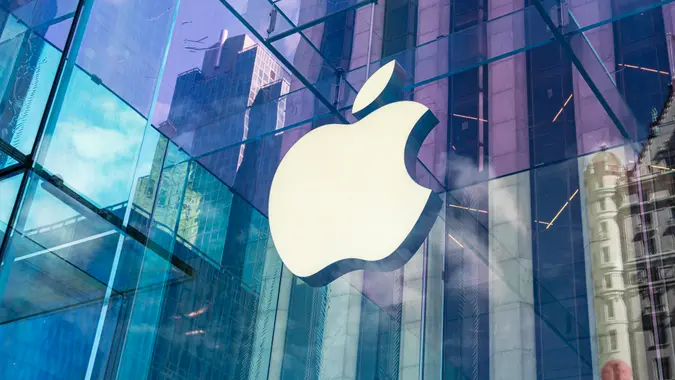3 Reasons Intel Stock Skyrocketed — Is It Too Late To Invest?

Commitment to Our Readers
GOBankingRates' editorial team is committed to bringing you unbiased reviews and information. We use data-driven methodologies to evaluate financial products and services - our reviews and ratings are not influenced by advertisers. You can read more about our editorial guidelines and our products and services review methodology.

20 Years
Helping You Live Richer

Reviewed
by Experts

Trusted by
Millions of Readers
Intel (INTC) is a large and well-known tech company. Even casual computer users are likely familiar with its chips, thanks to the company’s long-running, successful “Intel inside” slogan.
But that doesn’t mean the stock has been a great buy. In fact, for a number of years now, the stock has been in a major slump. So when Intel shares jumped sharply in February 2025, investors took notice.
What is the cause of this recent trend reversal in the stock, and is it likely to continue? In short, is it too late to invest? Read on to learn more.
Also see strategies for new investors on how to invest in artificial intelligence (AI).
Why Is Intel Moving Up?
From Feb. 7 to Feb. 18, Intel shares moved from $19.10 to $27.39, a 43.4% jump. That’s a massive move in just over one week of trading.
So what’s behind this move up in Intel stock? There are three major reasons Intel popped in February.
The most immediate reason is the U.S. government seems to be throwing its weight behind the production and design of AI chips in America. This has already drawn orders from big names like Amazon and Microsoft, and that trend is likely to continue in the current environment.
After years of falling behind in this area — Intel’s AI division lost a staggering $13 billion 2024, according to Forbes — this change in outlook could result in a significant improvement in Intel’s operating results.
The second is that the market is abuzz with rumors of deals in the semiconductor world. Specifically, Broadcom is said to be making a bid for Intel’s core chip design business, as reported by The Wall Street Journal. Also, Taiwan Semiconductor may be taking over Intel’s fabrication unit. Any type of spinoff or sale could unleash extra value for the company, so investors may have rushed in and pushed shares higher. As The Motley Fool reported, Intel stock was “skyrocketing” after the announcement.
A final reason could be that Intel has suffered mightily over the past few years in the market, pushing its price to what some view as undervalued and oversold. Between falling far behind in the AI market to losing its CEO in late 2024 to being kicked out of the venerable Dow Jones Industrial Average in Nov. 2024, the company has certainly taken its lumps.
Even including the recent bump, shares are down about 57% over the past five years as of Feb. 28, with about 43% of that drop coming in the past year alone. Many investors may have been simply waiting for the share price trend to reverse, at which point they piled into the stock.
Where Could Intel Go From Here?
Although Intel’s share price move in mid-February was impressive, the bloom is already coming off the rose. After closing at $27.39 on Feb. 18, shares fell to $23.09 as of the close of business on Feb. 27. That amounts to a decline of about 15.7%.
Intel shares are still about 21% above their Feb. 7 close, but they have clearly been weakening. If the U.S. follows through on its support of AI chip manufacturing in the U.S. and even one of the deals with Intel closes, shares could reverse higher again. That could potentially make this a good entry point for those who want to “buy low and sell high” on shares of Intel, which still sit nearly 70% below their all-time high in 2000 of $74.88.
In the analyst community, the vast majority of analysts — 38 out of 44 — have “Hold” ratings on the stock, which may seem like a negative but could actually be a long-term catalyst. If the fundamentals of Intel start turning around convincingly, this leaves a lot of room for analysts to get on board and start recommending the stock. With every one of those 38 ratings that turns from “Hold” to “Buy,” investors will start taking notice.
Is It Too Late To Invest?
The risk with Intel shares at this level could be that they won’t appreciate in the near term, but the downside seems more limited than with its high-flying brethren. As shares have already corrected significantly from their recent spike, Intel can still be bought at a bargain, particularly if you believe in the company’s longer-term outlook.
You may have to be patient, however, as Intel is definitely a “show me” stock at this point. This means investors are likely in “wait and see” mode until they see whether some of the rumors and favorable tailwinds for Intel actually kick in.
More From GOBankingRates
- Nearly 1 in 3 Americans Hit by a Costly Holiday Scam, Norton Survey Shows -- How To Avoid This
- Here's What Retirees Wasted the Most Money On in 2025 -- and How To Avoid It in 2026
- How Middle-Class Earners Are Quietly Becoming Millionaires -- and How You Can, Too
- 6 Safe Accounts Proven to Grow Your Money Up to 13x Faster
 Written by
Written by  Edited by
Edited by 

























